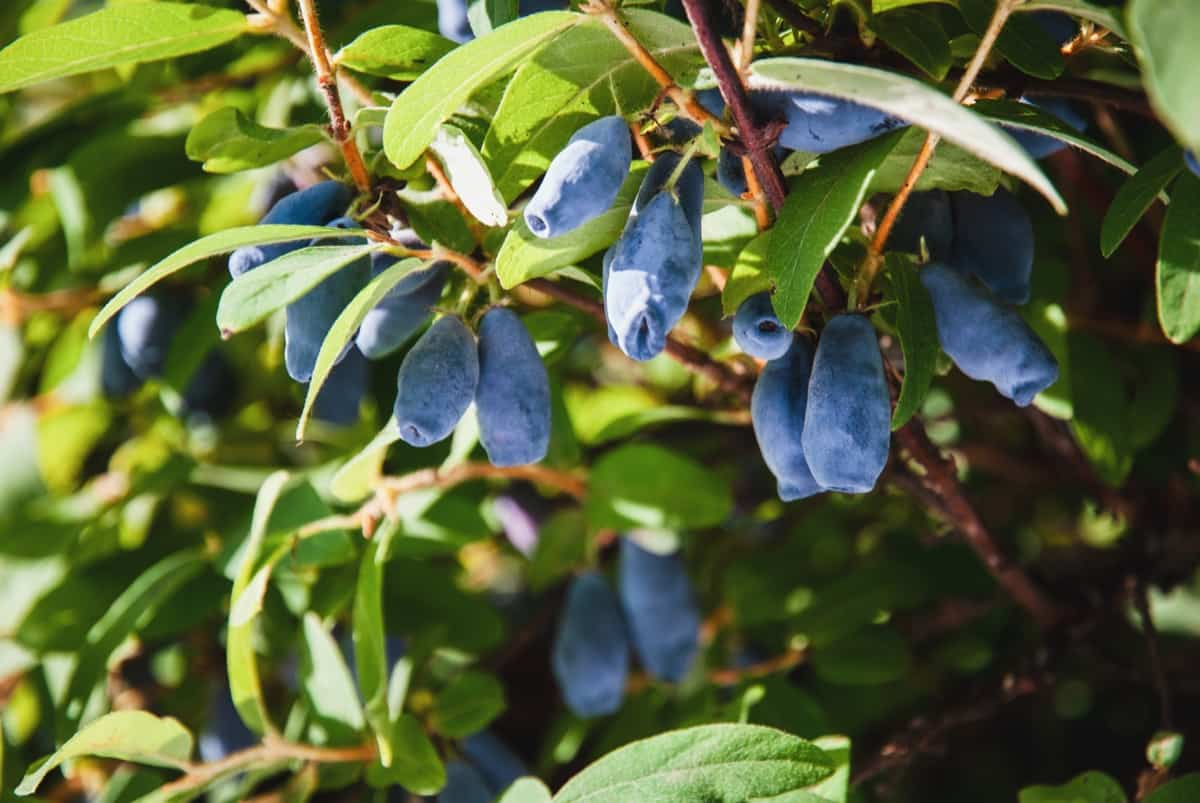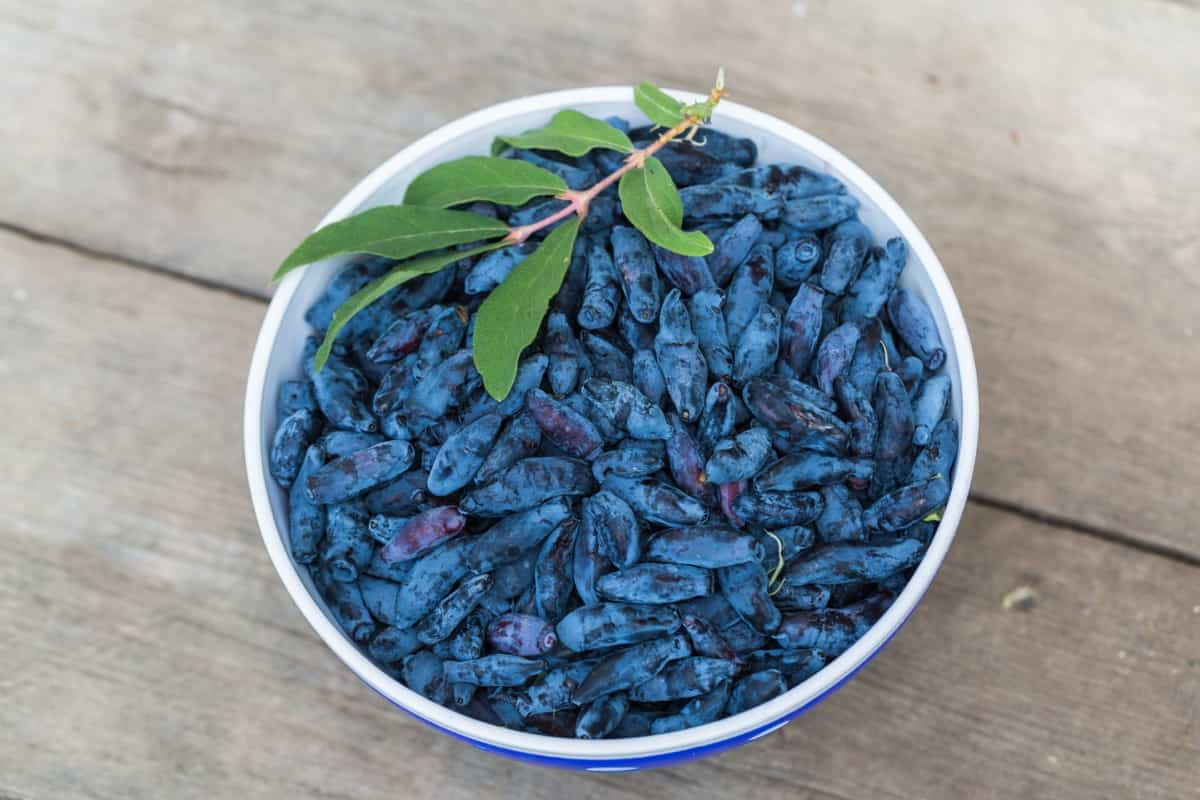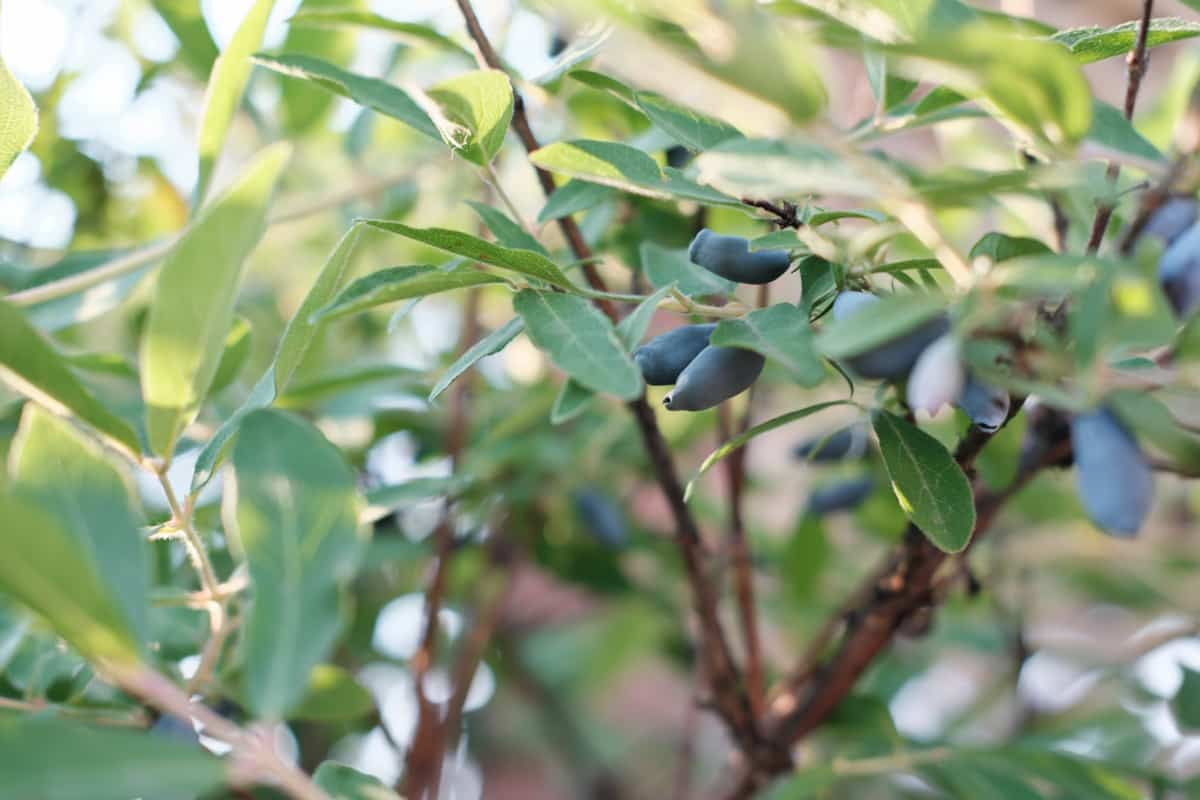Growing Honeyberries can be a fun and rewarding experience for any gardener. These unique plants are not only beautiful, but they also produce delicious and nutritious fruit. Honeyberries, also known as Haskap berries, are small fruits that resemble elongated blueberries with a unique flavor profile.

How to Grow Honeyberries from Seed and Cuttings
Best Honeyberry Varieties for Your Garden
- Blue Moon Honeyberry: It produces abundant crops of plump berries that are perfect for snacking or adding to desserts.
- Berry Blue Honeyberry: It is known for its vigorous growth habit, making it an ideal option for those looking to establish a productive Honeyberry patch.
- Cinderella Honeyberry: This variety offers exceptionally sweet berries with low acidity levels, making them a hit among kids and adults alike.
- Borealis: This particular type of Honeyberry matures earlier than most other varieties, allowing you to enjoy its delectable fruits even sooner in the season.
- Sugar Mountain: These dwarf-sized Honeyberries offer all the deliciousness of their larger counterparts but in a more manageable size.
Preparing the Soil for Growing Honeyberries
Preparing the soil for growing Honeyberries is crucial to ensure a bountiful harvest. These unique shrubs thrive in fertile, neutral soil with a pH range of 6.0-7.5. It’s also beneficial to incorporate some balanced fertilizer into the top layer of soil before planting Honeyberries. This will provide important nutrients that promote healthy growth and fruit production.
Planting Honeyberries: From Seed and Cuttings
How to Grow Honeyberry from Seed
To grow Honeyberries from seed, start by scarifying the seeds by using sandpaper or a file to break their hard outer shell. Soaking them in water overnight can also help with germination. Next, sow the seeds in a well-draining potting mix, covering them lightly with soil. Keep the soil moist but not soggy, and place the container in a warm location.
How to Grow Honeyberry from Cuttings
Alternatively, you can propagate Honeyberries from cuttings. Select healthy stems about 6-8 inches long and remove any leaves from the lower part of the cutting. Dip the bottom end into hormone powder to promote root development. Plant each Honeyberry cutting in a pot filled with moist vermiculite or perlite mix, ensuring that at least one node is buried beneath the surface. Regardless of your chosen method, provide your young plants with adequate sunlight and regular watering as they establish themselves.
Honeyberry Companion Plants
- Blueberry bush – Blueberries and Honeyberries have similar soil and sunlight requirements, making them a perfect match. Planting them together contrasts the blueberry’s vibrant green foliage and the Honeyberry’s delicate yellow flowers.
- Comfrey – Comfrey is known for its deep taproot system that helps bring nutrients from deeper soil layers. This nutrient-rich compost tea can be a natural fertilizer for your Honeyberry plants.
In addition to blueberries and comfrey, other suitable companion plants include strawberries, chives, marigolds, and yarrows. These plants provide added benefits such as pest control or attracting beneficial insects and create an aesthetically pleasing garden bed.
In case you missed it: The Best Fertilizer for Blueberries: When and How to Apply

How to Grow Honeyberry in Pots?
First, choose a suitable pot at least 12 inches deep and wide. Make sure it has drainage holes at the bottom to prevent waterlogging. After that, fill the pot with a well-draining potting mix, preferably one rich in organic matter. Next, select a healthy Honeyberry plant from a reputable nursery or garden center. Remove the Honeyberry plant from its pot and loosen the roots before placing it into the prepared pot.
Water your potted Honeyberry thoroughly after planting, and keep the soil moist but not soggy. Fertilize your potted Honeyberries with a balanced slow-release fertilizer in early spring and again after fruiting. Follow package instructions for application rates based on your specific brand of fertilizer. Prune your potted Honeyberries annually during late winter when they are dormant to maintain shape and encourage new growth. Remove dead wood, crossing branches, or weak stems while leaving healthy ones behind.
Fertilizing Honeyberries: Dos and Don’ts
Dos
- Use organic fertilizers: Organic fertilizers provide a slow-release source of nutrients, which is ideal for Honeyberries.
- Apply fertilizer in early spring: This helps provide the necessary nutrients as the plants grow.
- Follow the recommended dosage: Over-fertilizing can lead to excessive vegetative growth and may reduce fruit production, so following the recommended dosage on the fertilizer packaging is important.
Don’ts
- Avoid high-nitrogen fertilizers: High nitrogen levels promote excessive leafy growth at the expense of Honeyberry fruit production, so it’s best to avoid using these fertilizers.
- Don’t apply fertilizer late in the season: Late-season applications can stimulate new growth that may not have enough time to harden off before winter, increasing susceptibility to cold damage.
Pruning Honeyberry Plants: When and How to Do It?
Pruning Honeyberry plants is an essential part of their care routine. Proper pruning ensures healthy growth, improves air circulation, and increases fruit production. Start by removing any damaged branches. To shape your Honeyberry bush, selectively prune back longer shoots growing outwards or crossing over each other. Doing so will encourage a more compact and tidy growth habit. Proper timing and technique are key when it comes to pruning Honeyberry plants.
In case you missed it: A Versatile Creeping Raspberry Groundcover Plant

Major Honeyberry Pests and Diseases: Prevention and Treatment
Aphids – These insects feed on the sap, causing stunted growth and distorted leaves. Regularly inspect your Honeyberry plants and remove any affected leaves or branches to prevent aphid infestations. You can also introduce beneficial insects like ladybugs to control aphid populations naturally.
Fungal diseases like powdery mildew or gray mold – To prevent these issues, ensure good air circulation around your plants by spacing them properly and pruning any overcrowded areas. Applying a fungicidal spray at the first sign of disease can help stop its spread.
Root rot – This condition occurs when the soil has excessive moisture, leading to root decay. To prevent root rot, ensure your planting area has well-draining soil and avoid overwatering your plants.
Pollination of Honeyberry Flowers
Honeyberries are self-fertile, meaning they can produce fruit independently without needing another Honeyberry plant nearby. However, planting multiple Honeyberry plants near each other can greatly improve pollination and increase crop yield. One way to do this is by planting companion plants that attract bees and pollinators. Some good options include lavender, borage, and wildflowers.
These will provide food for the insects and help create a diverse ecosystem in your garden. Another method is hand pollination, using a small brush to transfer pollen from one Honeyberry flower to another. Gently brush the inside of each flower, moving from one flower cluster to another within the same plant or between different plants if you have more than one.
Honeyberry vs Blueberry: Key Differences
Honeyberry and blueberry may sound similar, but they differ in taste, appearance, and cultivation. Let’s explore the key differences between these two delicious fruits. Taste-wise, Honeyberries have a unique flavor profile that combines sweet and tart notes. Some describe it as a mix of blueberries, raspberries, and blackberries. On the other hand, blueberries are known for their classic sweet taste with subtle tanginess.
In terms of appearance, Honeyberries resemble elongated blueberries or small grapes. They come in various shades of purple or blue when ripe. Blueberries, conversely, are rounder in shape with a dark bluish-purple color. Regarding growing conditions and care requirements, Honeyberry plants thrive in colder climates and tolerate frost better than blueberry plants. They also require less acidic soil than blueberries, which prefer highly acidic conditions.
When to Harvest Honeyberries?
Knowing when to harvest Honeyberries is crucial to enjoy their sweet and tangy flavor at its peak. The harvest timing depends on various factors, including the variety of Honeyberries you have planted and your local climate. Generally, Honeyberries are ready for harvesting in late spring or early summer. Once the Honeyberries have turned from green to a deep blue-purple and feel slightly soft when touched, they are likely ready to be picked. However, it’s important not to wait too long as overripe Honeyberries can become mushy and lose their delicious taste.
In case you missed it: How to Grow Organic Strawberries: Fertilizers, Weed Control, and Care

What Does Honeyberry Taste Like?
Honeyberries are often described as a delightful combination of sweet and tart flavors. The flavor can change slightly depending on the variety and growing conditions, but Honeyberries offer a unique and delicious eating experience. The texture of Honeyberries is similar to blueberries, with juicy berries that burst in your mouth.
They have a thin skin that adds a pleasant pop when bitten into. One thing to note about Honeyberries is their flavor profile can change as they ripen. However, as they mature and turn darker in color, their sweetness increases while maintaining the right amount of tanginess.
What are the Benefits of Honeyberries?
In addition to their delicious taste, Honeyberries offer many health benefits that make them even more enticing. They are also high in vitamins C and E and fiber, making them nutritious for your diet. Furthermore, Honeyberries have been found to have anti-inflammatory properties and may contribute to heart health by reducing cholesterol levels and improving blood circulation.
Conclusion
Honeyberry, also known as Lonicera caerulea, is an intriguing plant that belongs to the Honeysuckle family. Caring for Honeyberry plants is essential to ensure a bountiful harvest of these delicious fruits. One important aspect of caring for Honeyberries is providing them with the right soil conditions. Using organic options like compost or aged manure, fertilizing Honeyberry plants should be done sparingly.
- Feed Your Flock for Less: Top 10 Tips to Save on Chicken Feed
- Ultimate Guide to Ossabaw Island Hog: Breeding, Raising, Diet, and Care
- Hatching Answers: The Top 10 Reasons Your Chickens Aren’t Laying Eggs
- Eggs and Economics: Breaking Down the Cost of Raising Backyard Chickens
- Defend Your Greens: Proven Methods to Keep Iguanas Out of Your Garden
- Ultimate Guide to Cinnamon Queen Chicken: A Comprehensive Guide for Beginners
- Ultimate Guide to California Tan Chicken: Breeding, Raising, Diet, Egg-Production and Care
- Ultimate Guide to Marsh Daisy Chicken: Breeding, Raising, Diet, and Care
- 10 Types of Chicken Farming Businesses You Can Start for Profits